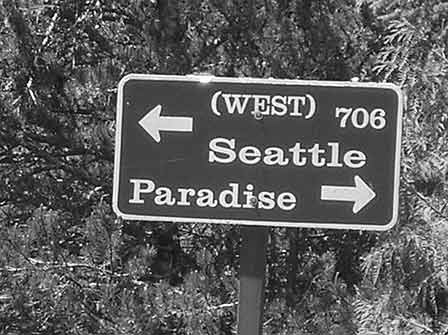By Morf Morford
Tacoma Daily Index
The beauty of Tacoma’s North End, especially the Proctor district, was that, besides its occasional majestic homes, much of it was not so different from the rest of Tacoma.
Yes, the North End may have more than its share of large vintage Craftsman homes, but the vast majority of houses were mid-sized and affordable to young families.
The Proctor District, unlike virtually every other neighborhood in Tacoma, is centralized, not sprawling along major arterials and was packed with walkable essential services.
Some areas had over 80% home ownership rates.
Even many years ago, there were two mainline grocery stores, a picturesque, historic library, two bakeries, a theater and a host of independent, locally and family-owned businesses.
Parking was free and ample – mostly because many of us could walk to the business district.
Besides Safeway and Radio Shack (closed in early 2017) there were no chains.
Now, of course, affordable housing has gone the way of the anachronistic bakeries. And instead of local or family owned cafes or coffee shops, our corner Starbucks is packed virtually every hour it is open for business.
Most young families cannot afford to live in the Proctor neighborhood.
The Proctor District is beginning to feel like yet another Seattle colony.
In true Seattle fashion, in place of essential services, we have a constantly shifting roster of boutique services.
In our Seattle micro-culture we have a yoga studio across from an upscale donut shop. And another one on the way.
Of course we would.
The largest and most historically intriguing homes, with the best views, within the trendiest neighborhood pockets, are barely affordable to the locals.
My situation is typical; I’ve been living in the North End since the late 1970s, first as a renter and since the early 1980s, a homeowner. There is no way that I could afford my own house now.
None of this is news to anyone living here. And Tacoma is not unique with these changes.
No one wants to go back to the days (if not years) of abandoned houses and shuttered storefronts.
Managed – or even manageable – growth is the mirage urban planners, local politicians, architects and neighborhood groups spar over and perhaps never agree on.
We all love – and have different visions for – our neighborhoods.
And we all know that growth is inevitable.
Yes, there is more traffic now, parking can be hard to find and the lines are longer, but that is not what bothers me the most; what I miss are the entrepreneurial oddities you find in a small town, the places where people pursue their passions and hold a lifetime of experience behind their product or service – and have the time to explain it all to novice customers.
It’s not even the size or scale of the new developments that bothers me; it’s the real estate feeding-frenzy that tries to convince us that money is more important than history, and ‘flipping’ houses does not destroy neighborhoods.
Home prices go up by the week – but who profits? Certainly not people who love and want to stay in the neighborhood.
The irony is that young people – who most want walkability, affordability and locally sourced goods and services (and, to a large degree, imagine that they invented or at least were the first to appreciate these things) are the very ones insuring their disappearance.
The ‘Move to Tacoma’ movement (http://www.movetotacoma.com/) has as its deliberate first principle, the goal to convince those ‘outside of Tacoma’ (which is code for Seattle) to move here.
And they have.
And they have driven up North End housing prices to near-Seattle levels.
Many of us who live here can barely afford to stay here – and our children are even less likely to stay here.
Like few neighborhoods in our entire state, Tacoma’s North End has many families who have been here for generations.
My grandchildren now live only a few blocks from where I lived when their mother (my daughter) was born.
This is now more difficult to impossible with each passing day.
There are many reasons why I love Tacoma – eccentric and historic architecture, access to Puget Sound, stunning views and affordability are only a few.
But I moved to the North End for a very personal reason.
I grew up just south of PLU. As a child I had woods and green spaces all around me. As I grew up, these green spaces – even ponds and creeks – became paved over parking lots and strip malls
I moved to the North End because I wanted a place where homeowners took care of their homes, and parks and green spaces that would stay that way.
But even in the North End – but especially the North Slope – perfectly good homes – some beautifully crafted vintage homes – have been demolished to make way for non-descript, look-alike apartment buildings. Some of these apartments have been crammed into what had been a single-family home-sized lot.
I had my sleepy, congenial neighborhood where I knew the bakers and the grocery clerks and the bankers for many years.
But now I, and many others, wonder where it went.
Yes, there is a reason so many people want to live in the North End. It’s a beautiful, mostly quiet almost mythical neighborhood where, yes, most people know their neighbors, but neighborhoods – and relationships – take years to build. And are easily lost.
We all know that growth is inevitable. Change will come no matter how much some of us might fight it. But whether you live in the North End or not, whether you know your neighbors or not, whether you are a renter or a homeowner, your neighborhood, or even more so, your neighbors, need you.
And you just might discover when tragedy hits, that you need them even more.









